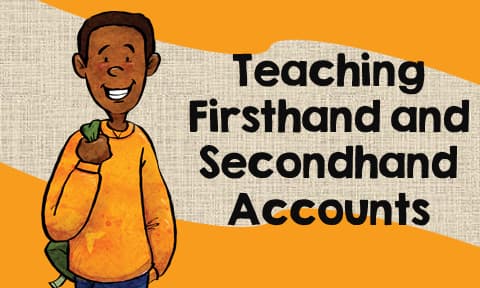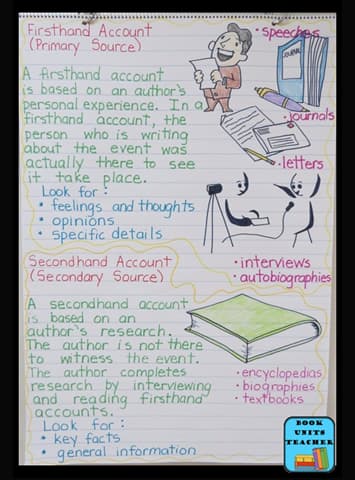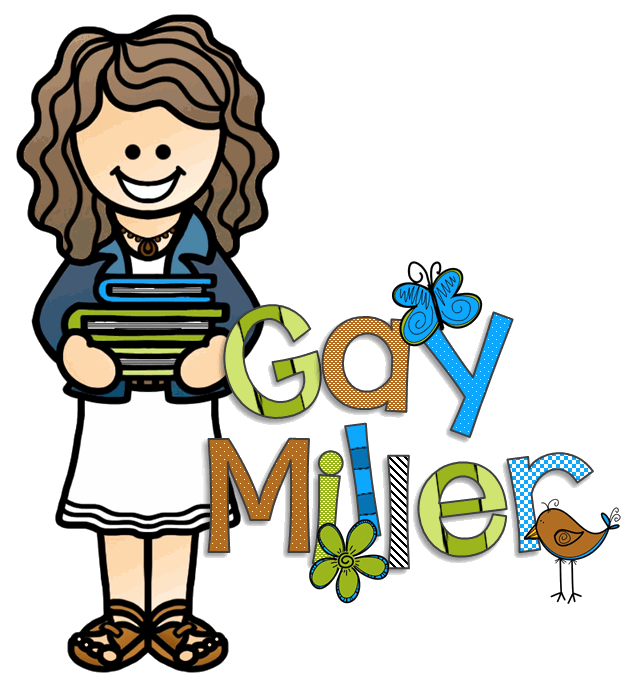
Firsthand and secondhand accounts are one of those things that are easy to say but a little trickier to teach reading skills.
Before we dive in, here’s a little story from my family archives. My dad was a genealogy buff. The kind of guy who had color-coded binders and could connect us to people like Frances Scott Key. Yep—the guy who wrote “The Star-Spangled Banner.” Apparently, one of his relatives married into our family, so we joke that we have a “string of Keys” in our family tree.
On the flip side, my mom’s cousin married a woman whose family was granted land on Edisto Island by King George. And somewhere in the bloodline, there’s a signer of the Declaration of Independence named Pinckney. So, naturally, every generation gets someone named Pinckney. These fun facts didn’t make me famous, but they did make me love digging into different kinds of accounts—and how we tell stories, whether we were there or not.
Which brings us back to…
Firsthand vs. Secondhand accounts—and why your students need to know the difference!
Be sure to get the handout. It includes the printables you need to complete some of the activities.
Teaching Firsthand and Secondhand Accounts Rules and Examples
Why This Skill Matters (Yes, Really!)
Understanding firsthand and secondhand accounts helps students:
- evaluate credibility and bias
- improve reading comprehension
- strengthen historical analysis
- become responsible media consumers
And let’s be honest—half the internet is secondhand information trying to sound like firsthand experience. Helping students figure out who’s really telling the story is a major life skill.
Firsthand vs. Secondhand: The Basics
Firsthand Account

The author was there. They lived it, saw it, heard it, or experienced it personally.
👀 Look for:
- first-person pronouns: I, me, we
- feelings, opinions, and vivid details
- subjective language
Examples of Firsthand Accounts
- diaries or journals
- interviews
- speeches
- photographs and videos taken by the person who experienced the event
- newspaper articles or news reports written by someone present at the event
- eyewitness accounts of historical events written by people who were there
- social media posts and blogs written by people who experienced an event
- autobiographies
- letters and emails
Secondhand Account

The author was not there. They learned about the event from research or interviews.
👀 Look for:
- third-person pronouns: he, she, they
- factual summaries
- info pulled from several sources
- objective tone
Examples of Secondhand Accounts
- encyclopedia entries
- biographies [an account of a famous person based on research]
- textbooks
- newspaper [a news report about a crime witnessed by someone else]
- magazine [a summary of a scientific study conducted by other researchers]
- a narrative told by a friend about something that happened to someone else
- a book review of a novel written by another author
Identifying Firsthand and Secondhand Accounts
- Is the passage from a nonfictional resource or a fictional account?
- Does an eyewitness tell the story of the event? Was the person telling you about the event present to see it take place?
- Where did the passage come from?
- Does the text contain opinions?
- From which point of view is the text written?
- Does the text list reference sources?
Anchor Chart

An anchor chart on Firsthand and Secondhand Accounts is a valuable tool that enhances students’ understanding and provides quick reference points. It can be a helpful visual aid to support instruction and move students toward achieving success.
Quick Video (Perfect for Intro)

There’s a fantastic 3-minute explainer video that defines both types and gives side-by-side examples. Use it as your hook before any of the activities above.
Firsthand and Secondhand Accounts Activities
Activity 1: Quick Compare

The handout includes practice exercises for students. Students will read short firsthand and secondhand accounts of the following events and explain how they differ:
- Apollo 11 Moon Landing in 1969
- The Signing of the Declaration of Independence (1776)
- The Wright Brothers’ First Flight (1903)
- The Boston Tea Party (1773)
- The Great Wall of China (various periods)
Activity 2: Eyewitness Investigation (Crowd Favorite!)
Here’s where it gets fun. Split your class:
- Group A stays in the classroom.
- Group B goes on a short water or bathroom break.
- While Group B is gone, something memorable happens in the classroom. (Parent volunteers dressed as pirates? A hedgehog in a bowtie? Go wild.)
When Group B returns:
- Eyewitnesses describe what happened (firsthand).
- Investigators interview them.
- Journalists write the secondhand report.
Hands-on, hilarious, and educational. A trifecta.
Activity 3: Sorting
Hand out text snippets, short passages that are either firsthand or secondhand. Students read, sort, and justify their choices. Great for centers or whole-group discussion.
By sorting these snippets, students can practice distinguishing between firsthand and secondhand accounts based on personal experiences, senses, and direct involvement.
Firsthand and Secondhand Accounts Practice on the Web
- Use the stories on the Good News Network. The stories are inspirational. Some articles include direct quotes. Others contain videos and pictures. Select a few to share with students. Discuss if the pieces have firsthand or secondhand information.
- Sadlier School [A four-day lesson plan using Ruby Bridges is provided. You must provide an email address to download the materials.]
- English Worksheets Land [Two articles about the same event, plus a Venn diagram to compare and contrast the two accounts, are provided.]
Everything’s ready for you: activities, examples, and printables. Just click below and go.
Teaching firsthand and secondhand accounts doesn’t have to be dry or textbook-y. With a little imagination—and maybe a hedgehog—your students will not only grasp the concept, they’ll remember it.
And who knows? Maybe one day they’ll be the ones writing the firsthand account about their hilarious fourth-grade classroom… with the teacher who made learning unforgettable.
See the product that inspired this post.
If you need some additional materials to help teach firsthand and secondhand accounts, you might like to take a look at Tall Tales on Teachers Pay Teachers.




